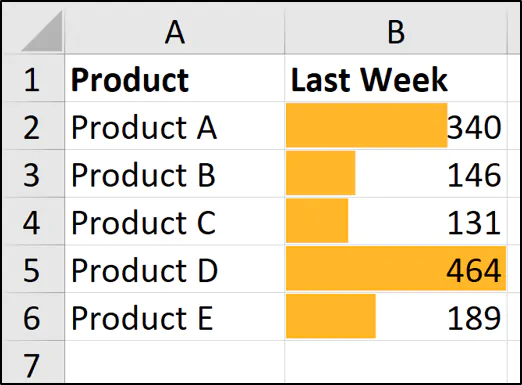Master Excel: Create Multiple Pages on One Sheet Easily

Do you find yourself needing to manage multiple sets of data or different reports within a single Excel workbook? One of the most versatile features in Excel is the ability to simulate multiple pages on one sheet. This can significantly enhance your productivity, especially when working with limited screen space or when you need to share your workbook with others who prefer a compact view. In this post, we'll delve into a variety of methods to create and manage multiple pages on a single Excel sheet, ensuring you can organize your data effectively.
Why Use Multiple Pages in One Excel Sheet?

- Clarity and Organization: Group similar data sets together without the need for multiple tabs.
- Space Efficiency: Keep all related data in one view, reducing the need to navigate between multiple sheets.
- Seamless Reporting: Compile various reports into one sheet, making it easier to present or share information comprehensively.
- Data Comparison: By keeping different datasets on one sheet, you can make quick comparisons without switching tabs.
Methods to Create Multiple Pages on One Sheet

1. Using Named Ranges

Named Ranges allow you to give a specific area of your worksheet a name, which can be used as a reference point for creating simulated pages:
- Select the cells where you want to create a named range.
- Go to Formulas > Define Name.
- Enter a name for this range.
- Click OK to apply the name.
Named Ranges provide an intuitive way to navigate between different “pages” in your workbook. You can then use these names in formulas or jump directly to these ranges using the Name Box.
2. Grouping and Outlining

Excel’s Group and Outline feature helps you manage visibility of rows or columns, simulating pages:
- Select the rows or columns you want to group.
- Go to Data > Group, then choose Rows or Columns.
- Use the +/- buttons to show or hide data.
📌 Note: The grouping feature in Excel allows for efficient organization, but remember to ensure that all grouped data is visible when you want to make comparisons or print.
3. Leveraging Scroll Bars

Scroll bars can help manage larger datasets on a single sheet, offering a way to scroll through “pages”:
- Create separate scroll bars for different data sets by using the Scrollbar form control from the Developer tab.
- Assign the scroll bars to scroll through named ranges or grouped areas.
4. Hyperlinks

Hyperlinks can be used to navigate within a sheet, simulating page changes:
- Select a cell where you want to place a hyperlink.
- Go to Insert > Hyperlink.
- Choose Place in This Document, then select the named range or cell to jump to.
This method is particularly useful for creating a table of contents or for providing quick access to different data sets.
5. Table Structures

Using Excel Tables can help structure data:
| Feature | Description |
|---|---|
| Automatic Formatting | Tables provide consistent formatting, enhancing readability. |
| Auto-Expanding | Tables automatically adjust as new data is added. |
| Header Filter | Easy sorting and filtering directly from the header row. |

📝 Note: Tables make data management easier, but they might conflict with some formulas if not set up properly. Ensure compatibility with your existing workbook setup.
Navigating Between Pages

Now that you’ve created simulated pages, here’s how to navigate through them:
- Using Named Ranges: Select the range name from the Name Box or use a keyboard shortcut (Ctrl+G).
- Hyperlinks: Simply click on the hyperlinks you’ve created to jump to different parts of your sheet.
- Scroll Bars: Drag the scroll bar to move through your data.
By incorporating these techniques, you not only enhance your workbook’s organization but also facilitate a smoother workflow for both yourself and those who might interact with your workbook. Remember, the key is to find a method that suits your particular data management needs while ensuring the workbook remains easy to navigate and understand.
The art of managing data in Excel involves more than just inputting numbers and text; it’s about optimizing your space for better productivity and clarity. By mastering the creation of multiple pages on a single sheet, you can transform complex data sets into manageable, user-friendly documents. Whether you're compiling financial reports, managing project milestones, or creating dynamic dashboards, these techniques will help you streamline your work process, making data presentation and analysis both efficient and visually appealing.
Can I create tabs within one Excel sheet?

+
While Excel does not support literal tabs within a single sheet, you can simulate this effect using the methods described above, like named ranges or grouping and outlining, to create the feel of different pages within one sheet.
What are the limitations of creating multiple pages on one sheet?

+
The main limitations include potential clutter if not managed properly, difficulty in printing multiple pages at once, and some formulas might not work as expected across different “pages” or named ranges.
How can I navigate between pages created on one sheet?

+
You can use named ranges, hyperlinks, scroll bars, or grouping and outlining to easily navigate within the same sheet.
Is there an automated way to create these “pages”?

+
Excel does not offer a native feature for automated page creation. However, VBA (Visual Basic for Applications) macros can be written to automate tasks, including simulating page creation with scroll bars or hyperlinks.
Can I print these simulated pages separately?

+
Yes, by setting print areas for each named range or group of rows/columns, you can print each simulated “page” individually.